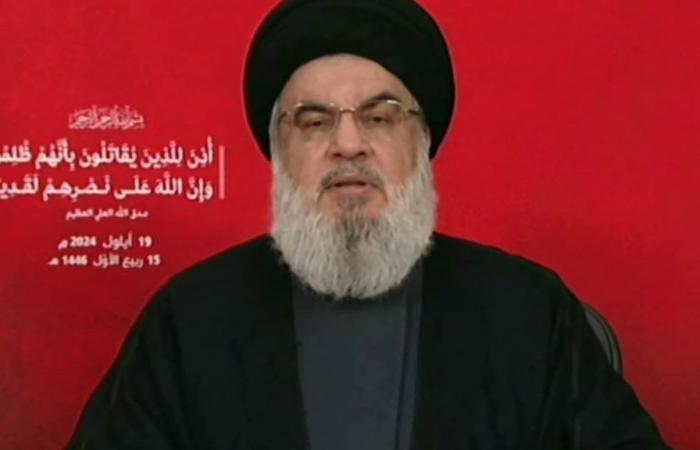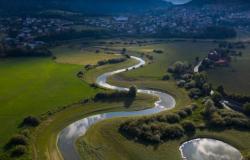The headquarters of powerful Lebanese Hezbollah leader Hassan Nasrallah was targeted by Israeli strikes on Friday. Israel claims this Saturday, September 28 to have “eliminated” it.
A powerful leader, but who rarely appeared in public. The Israeli army announced this Saturday, September 28, that it had “eliminated” Hezbollah leader Hassan Nasrallah, aged 64, in a strike in Beirut carried out on Friday. Who was this man who rarely appeared in public?
Born on August 31, 1960, Hassan Nasrallah came from a modest family of nine children, in the former “poverty belt” which surrounded Beirut. His family came from the village of Bazouriyé in southern Lebanon.
As a teenager, he studied theology in the Shiite holy city of Najaf, Iraq, but had to leave during then-Iraqi President Saddam Hussein’s wave of anti-Shiite repression. Married and father of five children, Hassan Nasrallah spoke Farsi fluently.
In Hezbollah since 1982
Returning to Lebanon, he became involved in the Shiite Amal movement, but seceded during the Israeli invasion of Lebanon in the summer of 1982 to become part of the founding core of Hezbollah, created under the leadership of the Guardians. of the Iranian revolution.
On a daily basis, he wore the black turban of the Sayyed, the descendants of the prophet Mohammed to whom he claimed his affiliation.
“The enemy has crossed all the red lines”: how far will the escalation between Israel and Lebanon go?
In a rare interview, he said that he played football in his youth and that he loved the Argentine player Diego Maradona.
Rarely seen in public
A sworn enemy of Israel, he lived in hiding for many years to escape the Jewish state. He has rarely appeared in public since the war between his movement and the Israeli army in the summer of 2006, and his place of residence has remained secret.
However, he received visitors including the leaders of Palestinian groups allied to his group, who published photos of the meetings. He also regularly delivered speeches broadcast live, to which the entire country was suspended.
The journalists and personalities who met him claimed to be driven by Hezbollah in cars with thick curtains, and with reinforced security measures, to an unidentifiable location.
The most powerful man in Lebanon
Hassan Nasrallah had been the charismatic leader of Hezbollah since 1992, when he succeeded Abbas Moussaoui, who was assassinated by Israel.
Then, he patiently made Hezbollah, armed and financed by Iran, evolve into an essential political force, represented in Parliament and in the government. At the same time, he developed the arsenal of his formation, which he said numbered 100,000 fighters, and had powerful weapons, including high-precision missiles.
Considered the most powerful man in Lebanon, deciding on war or peace in the country, he was the subject of a veritable cult of personality among his followers, particularly within the Shiite Muslim community of which he was from.
A consolidated stature in 2006
Throughout the clashes between his men and the Israeli army, Hassan Nasrallah consolidated his stature, and gained respect with the death in 1997 of his eldest son Hadi in combat.
The summer 2006 war with Israel, which lasted 33 days, allowed him to display the power of his movement, his fighters standing up to the Israeli army. The conflict caused the deaths of 1,200 Lebanese, mostly civilians, and 160 Israelis, mostly soldiers.
Hassan Nasrallah proclaimed the end of this war a “divine victory” and gained a hero’s profile in the Arab world.
But in Lebanon, he alienated several camps, when his party was accused of being involved in the assassination of former Prime Minister Rafic Hariri in 2005, then when his armed men briefly took control of the capital in May 2008.
Hezbollah becomes a key ally in the region
Hassan Nasrallah increased Hezbollah’s influence not only in Lebanon, but also in the region. In 2013, he announced that he had intervened militarily in neighboring Syria to support the regime of Bashar al-Assad, entangled in the civil war triggered by the repression of a popular uprising in 2011 which degenerated into an armed insurrection.
Then enjoying the total trust of Iranian leaders, he trained and supported movements close to Tehran in the region.
Hezbollah is today the “crown jewel” of Iran’s allies in the region united within an “axis of resistance”, which includes armed groups in Iraq and Yemen’s Houthi rebels as well as Palestinian Hamas.
Since the start of the war in Gaza between Hamas and Israel, Hassan Nasrallah opened the southern Lebanese front to support his Palestinian ally, before trying to avoid a full-scale war with Israel.






